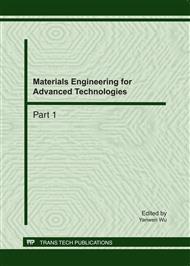p.590
p.595
p.599
p.605
p.609
p.614
p.619
p.624
p.629
Determination of Three Kinds of Volatile Residue of Ozone-Depleting Substances in Polyurethane Foam by Gas Chromatography
Abstract:
This paper developed a gas chromatography for the determination of volatile residue of ozone-depleting substances (OSD) in polyurethane foam. The sample was detected by gas chromatography - electron capture detector (GC-ECD) under the condition of 120 oC, 5 oC of condensing reflux temperature, 30 min of extraction time and external standard method for quantification. The experimental results of spike recovery showed that: the average recovery of residue of Trichloromonofluoromethane, difluoromonochloroethane and 1, 1, 2 - trifluoro -1, 2, 2 – trichloroethane, the three volatile organic solvent, was 72.7% ~ 116.1%, and the relative standard deviations were less than 5%. This method can effectively overcome the matrix interference, and one introduction of samples can separate and detect three kinds of volatile organic compounds in polyurethane, which has the characteristics of wide linear range and short response time and improves the analytical efficiency.
Info:
Periodical:
Pages:
609-613
Citation:
Online since:
June 2011
Authors:
Price:
Сopyright:
© 2011 Trans Tech Publications Ltd. All Rights Reserved
Share:
Citation:


